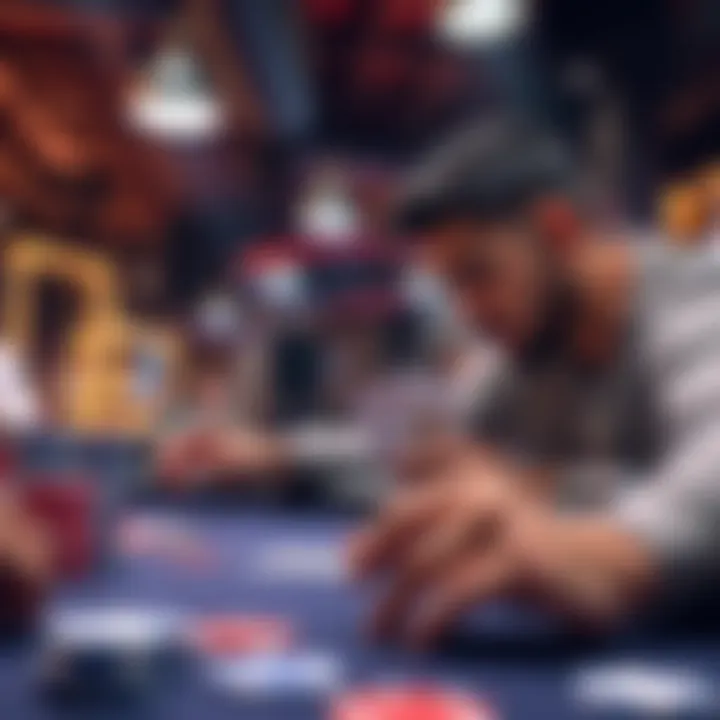High Stakes in Heads-Up Limit Badugi | Strategy Sparks Debate
Edited By
Emily Chen

A recent discussion among players of heads-up limit Badugi highlighted the pressure and complexity of raising in high-stakes situations. With surprising raises and massive pots at play, stakes have never been higher.
The Setup: A Fateful Hand
A player revealed their experience of being dealt a 754A rainbow. After multiple aggressive raises, tension escalated as the pot grew. Despite holding a seemingly strong hand, the player ultimately lost when faced with an opponent's 7432 dugi.
Users reacted with varied opinions on the optimal strategy in such intense scenarios.
Key Themes from the Discussion
Aggression Level: A notable comment suggested, "After the fifth bet, I’d consider calling to avoid risking too much without solid reads."
Hand Evaluation: Others criticized the player’s decision to keep raising, emphasizing the need for awareness of opponents' ranges. One remarked, "You were behind the whole way and didn’t realize it or adjust."
Game Context: The structure of Badugi, especially without betting caps, invites fierce competition. Comments pointed out that, in this particular case, players seemed unaware of how aggressive the raises had become.
Player Insights and Reactions
"The 8bet felt ambitious," stated one participant. Another chimed in, suggesting that breaking from a strong hand could be prudent, especially with the ever-increasing bets and no flop to buffer the decision.
The atmosphere remained charged, with players weighing the merits of bravado versus strategic caution in high-stakes limits,
Key Takeaways
🔻 Judicious Play is Key: Experienced players advocate for strategic restraint after multiple raises.
◉ Know Your Opponent: Understanding an opponent's betting patterns is critical.
🚀 Adaptability Matters: Surprising betting strategies can both surprise and overwhelm when properly executed.
As the dialogue continues, many agree that balancing aggression with measured decision-making is essential in heads-up limit Badugi. Observers wonder, how far is too far when raising in a game defined by bold moves?
What Lies Ahead for High-Stakes Badugi Players?
As the competitive scene of high-stakes Badugi evolves, there's a strong chance that strategic adjustments will emerge among players in response to recent debates. Many experts estimate around a 65% likelihood that participants will begin to adopt more cautious approaches after multiple aggressive raises. This shift could lead to a greater emphasis on hand evaluation and opponent awareness, significantly affecting betting patterns in upcoming matches. With the game's inherent vigor and the absence of betting caps, players will find even bolder tactics being tested, heightening the stakes and reshaping strategies. As a result, those who adapt quickly to these shifts may find themselves at a substantial advantage in future encounters.
A Game of Chess in High Stakes
In a way, this scenario mirrors the world of chess championships, particularly during the famed match between Garry Kasparov and Deep Blue in the 1990s. In that iconic competition, each player's move was calculated under immense pressure, balancing aggression with strategic restraint. Similarly, players in high-stakes Badugi must now weigh their bets against their opponents' potential hands with a level of foresight reminiscent of a grandmaster contemplating the next move in a pivotal game. Just as in chess, where a single misstep can lead to an unexpected turn of fate, Badugi players are reminded that the art of strategy extends far beyond mere bravado.
